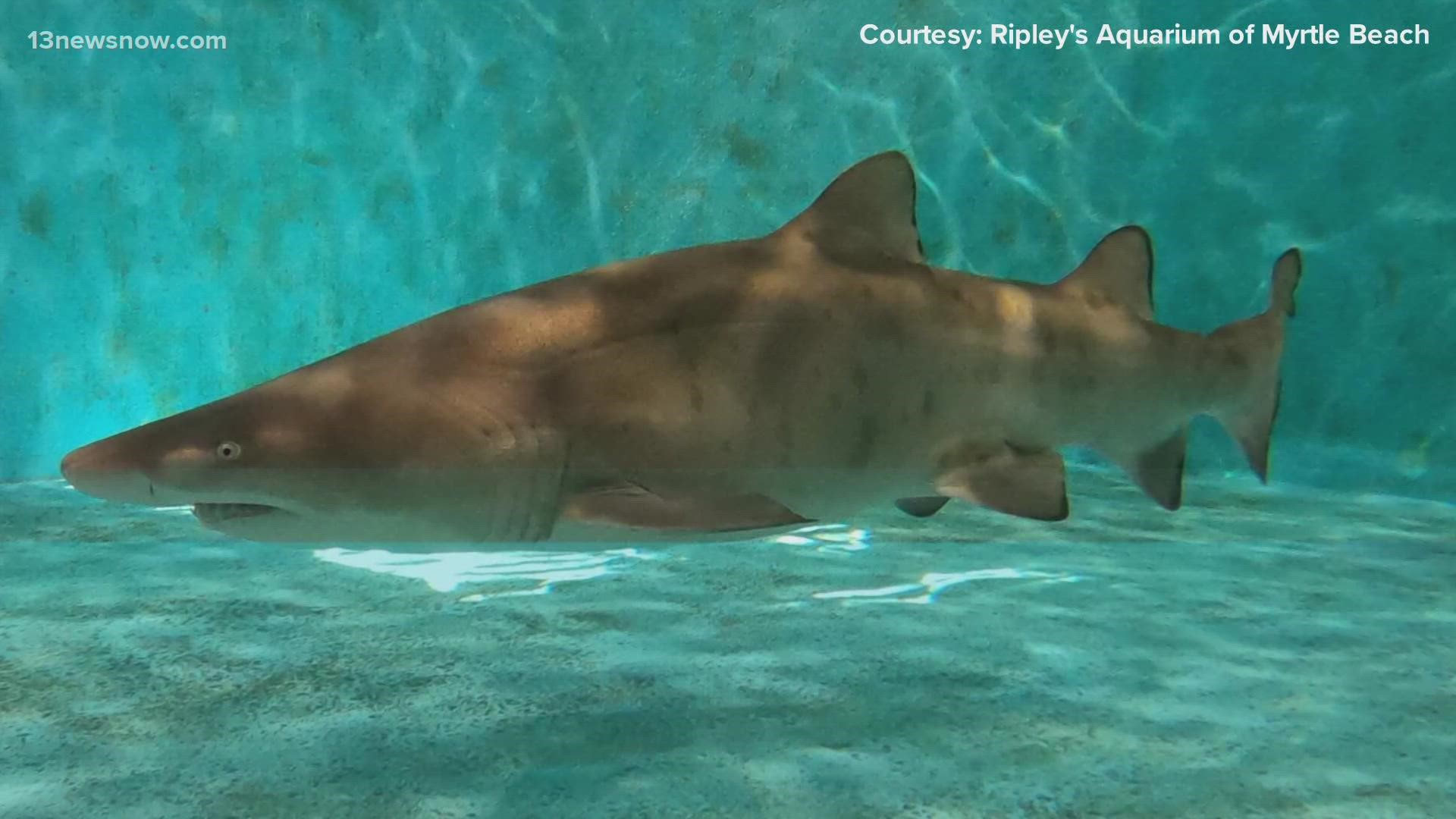MYRTLE BEACH, S.C. — Dr. Bob George lives in Mathews County, but one of his greatest accomplishments of 2022 happened down in Myrtle Beach, South Carolina.
He hand-delivered the first sand tiger shark pup to be born in captivity.
That baby, now named Rip, is making waves among marine biologists because sand tiger sharks are critically endangered. Being able to breed them will help people keep this species on the map.
As the chief of veterinary services for Ripley's, Dr. George also used some new techniques that could be applied to other endangered fish.
"This is the first live birth in the U.S.," he said. "And certainly the first live birth that's resulted from artificial insemination, that I know of, in the world."
He led a team that collected semen from a male sand tiger shark, implanted that in a female shark living at Ripley's Aquarium of Myrtle Beach, and once they neared her due date, went down every two weeks to get an ultrasound of the baby.
"When we first diagnosed that she was pregnant, put the first ultrasound probe on her ... there were people crying there, everybody was so excited. It was an emotional thing," he said.
Of course, there have been pregnancies in captivity before, but the pups weren't born alive.
"The feeling is that these animals aren't getting the signal, maybe, to have their pups."
That happened in this case, too -- scientists think, in nature, sand tiger sharks carry their young about 280-290 days before they give birth. 308 days into Rip's life, on March 24, 2022, his mother still hadn't delivered him.
"When we got to this point, and the pup was positioned well, we decided to kind of help Mother Nature along a little bit," Dr. George said.
When he says "help Mother Nature along," what he means is, he had to reach into the pregnant shark and pull the pup out by the tail.
"Being made of cartilage, a shark can turn and bite its own tail, so that, the large pup in there, despite the fact that it was about 3 feet long and 17 pounds, could do flip turns in there," he said. "Luckily, when it was time for this pup to come out, it was tail first, and not 'the bitey end,' as my wife would say."
Dr. George said he's not sure what he would have done if the baby was positioned teeth-outward. It's just good that they didn't encounter that. It took 15 people to safely contain the female shark, as it was.
Rip's doing well now, growing in a tank with other small sharks and rays.
"His length is increasing but he's losing some of that baby fat. He's looking more sharky all the time."
While the mother shark (nicknamed Big Mama by Dr. George) did a great job, there's a reason he's not kept with her.
"Mom has no maternal instinct at all," he said. "She would consider him a Hostess Twinkie, and he would disappear."
Dr. George said learning how to breed vulnerable animals in captivity helps boost their overall numbers.
"Zoos and aquariums throughout the world try as much as possible to learn reproductive techniques for animals in their care. It's kind of our way to 'pay back,'" he said. "Certainly, reproducing animals in a managed care situation allows species recovery. It's happened like in condors and whooping cranes and numerous other animals, and sharks are under heavy pressure in fisheries."
So while this is clearly a great step for sand tiger sharks, it also gives hope to other endangered aquatic animals.
"It's one of those things that everything benefits from," Dr. George said. "Techniques that work in sand tigers could work in even more endangered sawfish or other species."

